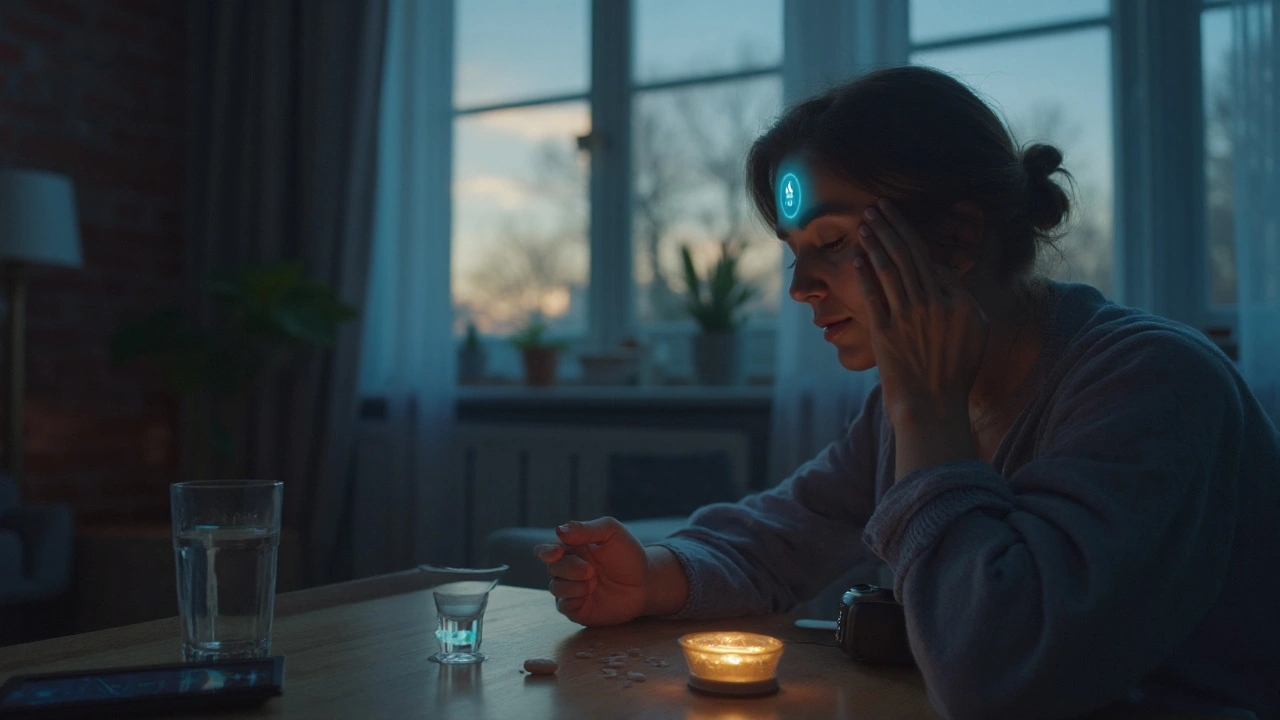
Can you pair rizatriptan with biofeedback to cut migraine pain fast and prevent the next one? Evidence, steps, pitfalls, and a clear plan you can use today.
Ever wish you could see your body’s signals the way you see a dashboard? Biofeedback therapy does just that. It uses tiny sensors to turn things like heart rate, muscle tension, or skin temperature into visual or audio cues. When you can actually watch these numbers change, you learn how to control them—often without any medication.
People use biofeedback for everything from calming anxiety to easing chronic pain. The magic isn’t in a fancy gadget; it’s in the brain‑body connection you train yourself to notice. Below we break down the basics, the biggest benefits, and how you can try it without a huge investment.
First, a sensor is placed on your skin—usually on the forearm, finger, or scalp. The sensor sends real‑time data to a computer or smartphone app. You’ll see a line moving up and down or hear a tone that changes pitch. Your goal is to move that line in a desired direction, like lowering your heart rate or relaxing a stiff muscle.
Training happens in short sessions, typically 20‑45 minutes. A therapist may guide you, or you can use a home‑based system after a few lessons. Over time, your nervous system learns the new pattern, so you can trigger it on your own—like taking a deep breath that instantly drops your stress level.
Common signals tracked include:
When you see a spike, you try a technique—slow breathing, guided imagery, or progressive muscle relaxation—until the reading improves. The instant feedback lets you fine‑tune the method for your own body.
1. Choose a beginner‑friendly device. Many apps work with cheap finger‑clip sensors or even your phone’s camera for HRV. Look for products with clear visuals and good reviews.
2. Set a simple goal. Rather than “reduce anxiety,” try “lower my heart rate by 10 beats in 5 minutes.” Measurable goals keep the training focused.
3. Pair the feedback with a proven relaxation technique. Diaphragmatic breathing (inhale 4‑sec, hold 2‑sec, exhale 6‑sec) works well for most people. Practice it while watching the screen.
4. Keep sessions short and regular. Consistency beats marathon sessions. Aim for three 20‑minute blocks per week to build the brain‑body link.
5. Track progress outside the session. Jot down how you feel before and after each practice. Over weeks you’ll notice patterns—maybe you handle work stress better after a week of training.
If you prefer professional help, a licensed therapist can customize the protocol and add advanced modalities like EEG biofeedback (neurofeedback). But many users find the DIY route works just fine for stress, tension headaches, or sleep issues.
Bottom line: biofeedback turns invisible signals into something you can see and change. With a cheap sensor, a few minutes a day, and a simple breathing routine, you can start training your body to stay calmer, move freer, and sleep deeper. Give it a try—you might be surprised at how quickly you learn to tweak your own nervous system.

Can you pair rizatriptan with biofeedback to cut migraine pain fast and prevent the next one? Evidence, steps, pitfalls, and a clear plan you can use today.